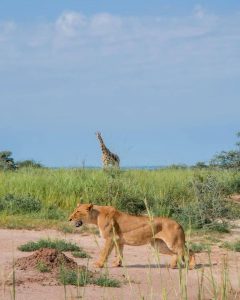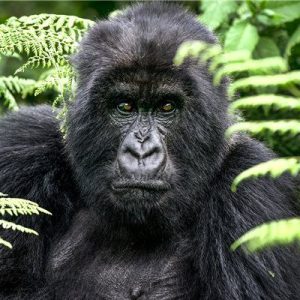Climbing Rwenzori Mountains Guide
Climbing Rwenzori Mountains Guide .The Rwenzori Mountains, also known as the Mountains of the Moon, are one of Africa’s most awe-inspiring natural wonders. Located on the border between Uganda and the Democratic Republic of Congo, this UNESCO World Heritage Site is renowned for its rugged beauty, unique flora and fauna, and challenging yet rewarding climbs. Unlike other mountain ranges, the Rwenzori offers an otherworldly experience with its glacier-capped peaks, moss-covered forests, and vast bogs, making it a dream destination for adventure seekers and nature enthusiasts.
This guide provides everything you need to know about climbing the Rwenzori Mountains to ensure a safe and unforgettable journey.
1. Overview of the Rwenzori Mountains
- Location: Western Uganda, bordering the Democratic Republic of Congo.
- Highest Peak: Margherita Peak (5,109 meters/16,763 feet) on Mount Stanley.
- Range Features:
- Glaciers and snow-capped peaks.
- Lush forests and unique vegetation zones.
- A variety of wildlife, including rare and endemic species.
- Best Time to Climb: Dry seasons (June to August and December to February) are ideal for climbing due to less rainfall and better trail conditions.
2. Why Climb the Rwenzori Mountains?
- Unique Adventure: Unlike Kilimanjaro or Mount Kenya, the Rwenzori Mountains are less crowded, offering a more exclusive and remote climbing experience.
- Breathtaking Scenery: From alpine meadows and glacial landscapes to tropical rainforests, the Rwenzori’s diverse ecosystems are a feast for the senses.
- Challenge: Climbing the Rwenzori is a technical and physically demanding trek, perfect for experienced climbers seeking a rewarding challenge.
- Cultural Immersion: The foothills of the Rwenzori are home to the Bakonzo people, offering opportunities to learn about their culture and traditions.
3. Main Routes for Climbing the Rwenzori Mountains
There are two main trekking routes for climbing the Rwenzori Mountains, each offering unique experiences:
A. Central Circuit Trail
- Overview: The most popular and established route, managed by the Rwenzori Mountaineering Services (RMS).
- Duration: 7 to 10 days.
- Highlights:
- Passes through all major vegetation zones.
- Leads to Margherita Peak (Mount Stanley), the highest point in the Rwenzori.
- Offers stunning views of glaciers, alpine landscapes, and valleys.
- Difficulty: Challenging due to steep trails, boggy terrain, and altitude.
B. Kilembe Trail
- Overview: Managed by Rwenzori Trekking Services (RTS), this route starts from Kilembe in the southern foothills.
- Duration: 7 to 10 days.
- Highlights:
- A scenic route with fewer crowds.
- Access to Mount Stanley, Mount Speke, and Mount Baker.
- Stunning views of Lake Edward and the surrounding plains.
- Difficulty: Moderately challenging but slightly less crowded than the Central Circuit.
4. Key Peaks in the Rwenzori Mountains
- Margherita Peak (Mount Stanley): At 5,109 meters, this is the third-highest peak in Africa and the ultimate goal for many climbers.
- Mount Speke: The second-highest peak in the range, known for its dramatic landscapes and challenging ascents.
- Mount Baker: Offers incredible views and a slightly less technical climb compared to Margherita Peak.
5. Preparing for Your Climb
Fitness and Training
- Climbing the Rwenzori requires physical and mental endurance. Start training months in advance with a focus on:
- Cardiovascular fitness (hiking, running, or cycling).
- Strength training (focus on legs, core, and upper body).
- Altitude acclimatization (if possible).
- Long-distance hiking with a backpack.
Permits and Guides
- Permits: All climbers must purchase trekking permits, which are included in tour packages offered by RMS or RTS.
- Guides and Porters: It is mandatory to hire certified guides and porters for safety and logistical support.
Packing Essentials
- Clothing:
- Layered clothing for varying temperatures.
- Waterproof jacket and pants.
- Thermal base layers, gloves, and a hat for cold conditions.
- Gear:
- Sturdy hiking boots.
- Climbing harness, crampons, and an ice axe for glacier trekking.
- Trekking poles for balance on steep or boggy terrain.
- Other Essentials:
- High-energy snacks and water bottles.
- Sunscreen and sunglasses.
- First aid kit and altitude sickness medication.
- A waterproof backpack.
6. Wildlife and Vegetation
The Rwenzori Mountains are a biodiversity hotspot, home to unique flora and fauna:
- Vegetation Zones:
- Montane Forests: Home to primates like colobus monkeys.
- Bamboo Zone: Known for its dense bamboo groves.
- Heather Zone: Characterized by giant heathers and moss-covered trees.
- Alpine Zone: Features giant lobelias and groundsels.
- Glacial Zone: Snow-capped peaks and glaciers.
- Wildlife:
- Mammals: Forest elephants, duikers, and Rwenzori otters.
- Birds: Rwenzori turaco, malachite sunbird, and other endemic species.
7. Challenges of Climbing the Rwenzori
Climbing the Rwenzori is not for the faint-hearted. Be prepared for:
- Altitude Sickness: Acclimatize properly to avoid symptoms like headaches, nausea, and dizziness.
- Boggy Terrain: The trails can be extremely muddy and slippery, especially during the rainy season.
- Cold Temperatures: The higher altitudes are freezing, particularly in the glacial zones.
- Technical Climbs: Summiting peaks like Margherita requires technical skills and climbing gear.
8. Best Time to Climb
- Dry Seasons:
- June to August: Best weather conditions with clear skies.
- December to February: Trails are drier and more accessible.
- Rainy Seasons:
- March to May and October to November: Heavy rains make trails slippery and challenging but provide lush, green scenery.
9. Cost of Climbing the Rwenzori Mountains
- Trekking Fees: Approximately $800-$1,200 USD per person, depending on the length of the trek and route.
- Climbing Permits: Around $50-$70 USD per day.
- Accommodation: Costs for mountain huts and lodges range from budget to mid-range options.
- Additional Costs:
- Guide and porter fees.
- Equipment rentals (if needed).
10. Tips for a Successful Climb
- Plan Ahead: Book your trek well in advance and choose a reputable tour operator.
- Stay Hydrated: Drink plenty of water to prevent dehydration and altitude sickness.
- Pack Light: Only carry essentials and let porters handle heavier loads.
- Pace Yourself: Take your time to acclimatize and avoid rushing to higher altitudes.
- Respect Nature: Leave no trace and follow all conservation guidelines to protect the pristine environment.
Conclusion
Climbing the Rwenzori Mountains is a thrilling adventure that combines challenging terrain with stunning natural beauty. From scaling the icy slopes of Margherita Peak to trekking through moss-covered forests, this journey offers an unparalleled experience for climbers and nature lovers alike. With proper preparation, the right gear, and an adventurous spirit, you can conquer the Mountains of the Moon and create memories that will last a lifetime.
Start planning your Rwenzori adventure today, and get ready to experience one of Africa’s most unique and rewarding climbs!




